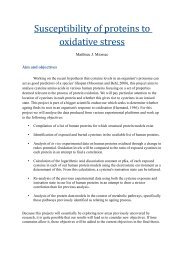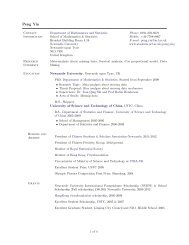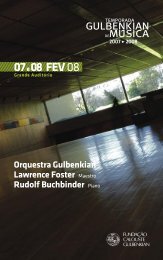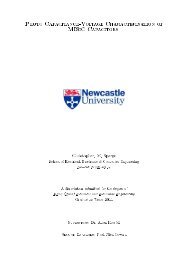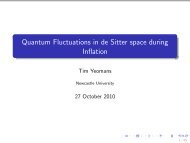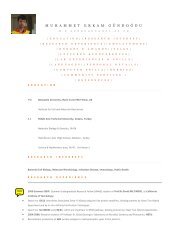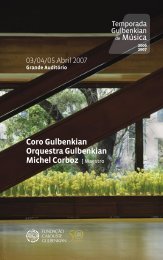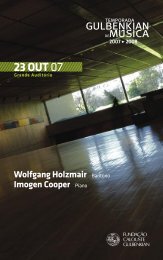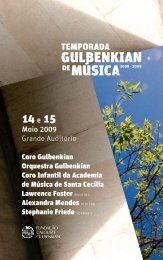Retinal Prosthesis Dissertation - Student Home Pages
Retinal Prosthesis Dissertation - Student Home Pages
Retinal Prosthesis Dissertation - Student Home Pages
You also want an ePaper? Increase the reach of your titles
YUMPU automatically turns print PDFs into web optimized ePapers that Google loves.
6.2.2 Envisaged retinal array<br />
This is the nature of the connection between the stimulator and the retinal array. The<br />
optic disc is an oval of 1.76mm by 1.92mm giving an area of 2.66mm 2<br />
[211]. There<br />
needs to be an assurance for a colour orientated prosthesis that only one axon will be<br />
targeted. Given 50% of the ganglion cells within the optic disc are concerned with<br />
colour signals originating from the fovea [212] then this implies 1.33mm 2 housing<br />
600, 000 fibres will have fibre areas of ≈2.2µm 2 and diameters of 1.68µm. The<br />
overlap between a 2µm diameter electrode and a 1.68µm fibre is 0.32 i.e. the<br />
encroachment upon neighbouring fibres will be 0.16µm, however as supporting<br />
tissue (0.34µm) is present before the axon we have a 0.17µm `safe’ zone before the<br />
neighbouring axon is targeted, figure 54.<br />
Figure 54 Axon clearance<br />
The stimulation site of a 2µm electrode is therefore well able to stimulate the 1µm<br />
axon of the RGC. As each electrode has an associated pitch of 50µm (0.05mm) the<br />
obtainable electrode density can be estimated by producing a square to cover the<br />
same area (1.33mm 2 ) meaning a side of ≈1.15mm. Then the number of pitches to<br />
110 of 200




